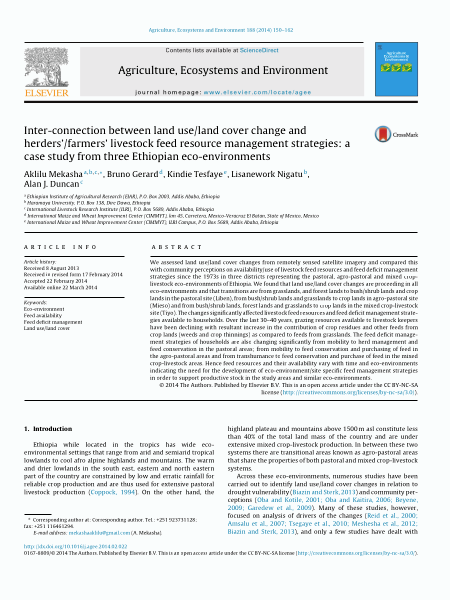Inter-connection between land use/land cover change and herders’/farmers’ livestock feed resource management strategies: A case study from three Ethiopian eco-environments
Abstract
We assessed land use/land cover changes from remotely sensed satellite imagery and compared this with community perceptions on availability/use of livestock feed resources and feed deficit management strategies since the 1973s in three districts representing the pastoral, agro-pastoral and mixed crop-livestock eco-environments of Ethiopia. We found that land use/land cover changes are proceeding in all eco-environments and that transitions are from grasslands, and forest lands to bush/shrub lands and crop lands in the pastoral site (Liben), from bush/shrub lands and grasslands to crop lands in agro-pastoral site (Mieso) and from bush/shrub lands, forest lands and grasslands to crop lands in the mixed crop-livestock site (Tiyo). The changes significantly affected livestock feed resources and feed deficit management strategies available to households. Over the last 30–40 years, grazing resources available to livestock keepers have been declining with resultant increase in the contribution of crop residues and other feeds from crop lands (weeds and crop thinnings) as compared to feeds from grasslands. The feed deficit management strategies of households are also changing significantly from mobility to herd management and feed conservation in the pastoral areas; from mobility to feed conservation and purchasing of feed in the agro-pastoral areas and from transhumance to feed conservation and purchase of feed in the mixed crop-livestock areas. Hence feed resources and their availability vary with time and eco-environments indicating the need for the development of eco-environment/site specific feed management strategies in order to support productive stock in the study areas and similar eco-environments.

